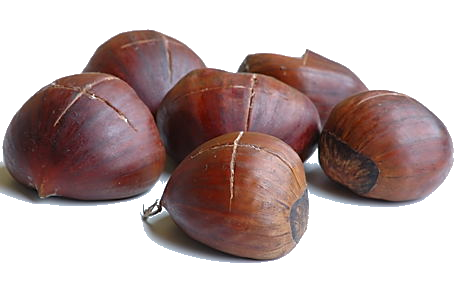
Hot Roast Chestnuts Hire Co.
Chestnut History
Probably one of the first foods eaten by man, the chestnut dates back to prehistoric times. The chestnut tree, Castanea sativa, was first introduced to Europe via Greece. The majority of the chestnut trees currently found in America are of native European stock, but Native Americans feasted on America's own variety, Castanea dentata, long before European immigrants introduced their stock to America.
In 1904, diseased Asian chestnut trees planted on Long Island, New York carried a fungus hitchiker that nearly devasted the American chestnut population, leaving only a few groves in California and the Pacific Northwest to escape the blight.
Today, most of the chestnut food crop is imported from Japan, China, Spain, and Italy. Chestnuts are known as marrons in France and some parts of Europe.
These starchy nuts are given to the poor as a symbol of sustenance on the Feast of Saint Martin and are also traditionally eaten on Saint Simon's Day in Tuscany.
Legend has it that the Greek army survived on their stores of chestnuts during their retreat from Asia Minor in 401-399 B.C.
Chestnuts contain twice as much starch as potatoes. It is no wonder they are still an important food crop in China, Japan, and southern Europe where they are often ground into a meal for breadmaking, thus giving rise to the nickname of "bread tree."
Chestnut timber resembles its cousin, the oak, in both color and texture and is highly-valued. Also known for its tanning properties, the trees can live up to five hundred years and usually do not begin to produce fruit until they are forty years old.
Copyright © Jason Moody & Emmerson Moody 2009
